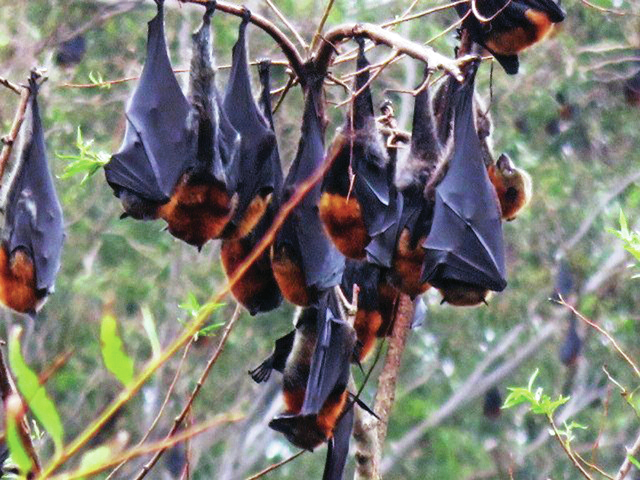CANBERRA, Australia — Batemans Bay is a picturesque coastal town that always leaves the welcome mat out for tourists. But tens of thousands of visitors of another kind have more than outstayed their welcome — large bats.
CANBERRA, Australia — Batemans Bay is a picturesque coastal town that always leaves the welcome mat out for tourists. But tens of thousands of visitors of another kind have more than outstayed their welcome — large bats.
Residents feel trapped in their guano-coated houses, and those who venture outside soon feel a disgusting “sprinkle of something.” Then there’s the early-morning screeching, so excruciating that Danielle Smith said it compelled her to go on anti-depressants.
Her 2-year-old can no longer play in the backyard, and “won’t even sleep in his own bed anymore because he’s so frightened of the bats,” she said.
“I can’t open my window at all because the smell is so bad,” Smith said. “We can actually taste it — that’s how strong it is.”
The area’s population of the gray-headed flying fox, Australia’s largest bat, peaked at up to 140,000 in April — nearly three times the number seen there last year.
Civic leaders agree the stinking, noisy, messy and potentially diseased bats have got to go. The local council will consider methods of driving them away in the next week. But getting rid of the protected native species, which is listed as vulnerable to extinction because of habitat loss, is no simple task. Some experts warn against even trying.
“It’s an unprecedented event because we’re in uncharted territory with how to manage it,” Mayor Lindsay Brown said.
The Commonwealth Scientific and Industrial Research Organization estimates there are 680,000 gray-headed flying foxes in Australia, meaning Batesmans Bay has been home to one in every five of them. Each bat can weigh over 2 pounds with wing spans exceeding 3 feet.

